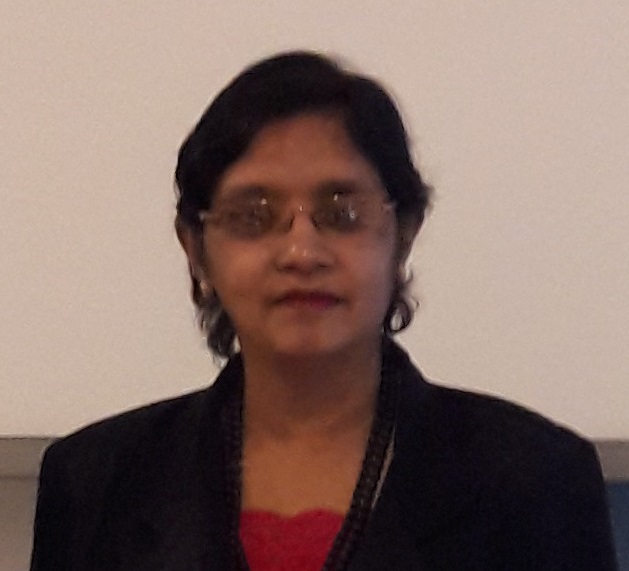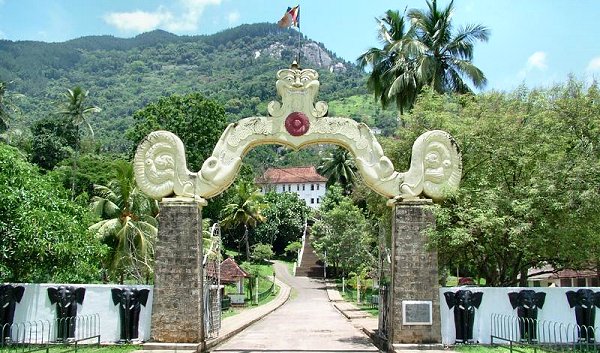Aluvihare Rock Temple – historic temple of a landmark Buddhist event
By Arundathie Abeysinghe
 Surrounded by verdant hills Aluvihare Rock Temple is a historic temple situated in Matale in *Matale – *Dambulla Road about 30 kilometers from Kandy City. History of the Rock Temple dates to 3rd century BC, the era of King Devanampiyatissa (247 BC – 207 BC). According to legends, King Devanampiyatissa had founded the Rock Temple after the introduction of Buddhism to *Ceylon and had also built the dagoba (stupa) and planted the *Bo sapling in the temple premises. The Rock Temple spreads across a large area through rocks and verdant vistas interspersed with coconut palms.
Surrounded by verdant hills Aluvihare Rock Temple is a historic temple situated in Matale in *Matale – *Dambulla Road about 30 kilometers from Kandy City. History of the Rock Temple dates to 3rd century BC, the era of King Devanampiyatissa (247 BC – 207 BC). According to legends, King Devanampiyatissa had founded the Rock Temple after the introduction of Buddhism to *Ceylon and had also built the dagoba (stupa) and planted the *Bo sapling in the temple premises. The Rock Temple spreads across a large area through rocks and verdant vistas interspersed with coconut palms.
The Rock Temple is the historic location where the *Tripitaka, the Pali canon was first written in text on *ola leaves.
Situated on several levels of rock surface and lush greenery, the atmosphere of the Rock Temple has a majestic look. There are 13 caves in the premises of the Rock Temple and monks have inhabited these caves in their quest for *Nirvana. There is a giant reclining Buddha Statue attended by images of divine and human figures in the dark main rock. There are also several monastery caves in the Temple, some of them displaying frescoes. Some of the rock shelters at the Temple have *Brahmi inscriptions and there are paintings and sculptures in some rocks.
According to chronicles, the scholar monk Buddhaghosa had visited Aluvihare Rock Temple in the 5th century AC, read and verified the commentaries of the Buddhist texts to indicate their authenticity.
Several years ago, Venerable Ethipola Medhankara Thera, a Chief Incumbent of Aluvihare Rock Temple had invited an Ayurvedic physician and four people, experts on writing on ola leaves and written the Tripitaka with the objective of preserving it. The writing on ola leaves were carried out between 1981- 1991. The ola leaf manuscripts of the Tripitaka are preserved in the library of the Rock Temple to date.
In 1986, additional features have been added to the Rock Temple; *Makara Thorana and Eth Pawura (Elephant Wall) and in 1997 the Sanghawasa (abode of monks) had been renovated with funds donated by a Korean Thero.
According to folklore, the rock caves of the Temple have occurred due to a massive landslide in the hill country.
There are many legends regarding the origin of the name Aluvihare. According to one legend, the Aloka Vihara became Aluvihara. According to another legend, Pali word Aloka (meaning light became Alu (light) and as it was the abode of monks, it was known as Viharaya (meaning temple in Sinhala). The two words Alu and Viharaya have been combined and become Aluviharaya or Aluvihare. According to another legend which many villagers also are of the view, the huge rock situated east of the main rock cave, there is light. Hence, the cave was known as Aloka Lena (meaning cave of light in Sinhala).
The entrance to Aluvihare Rock Temple is adorned with a majestic entrance with mythical monsters entwined for eternity.
The Rock Temple is a landmark on Matale – Dambulla Road.

- Bo sapling – The sapling of the Bodhi tree or Bo tree is the specific sacred fig tree (Ficus religiosa) under which the Buddha (Siddhartha Gautama) sat when the Buddha attained Enlightenment at Bodh Gaya in Bihar, India. Ficus religiosa is a species of fig tree native to the Indian subcontinent.
- Brahmi – The earliest writing system developed in India after the Indus script and considered as an influential writing system. All modern Indian scripts as well as several hundred scripts that are in South Asia, Southeast and East Asia are derived from Brahmi.
- Ceylon – Sri Lanka gained Independence from British Colonials in 1948. In 1972, Ceylon became a republic within the Commonwealth and Ceylon was thereafter known as Sri Lanka.
- Dambulla – Situated in Matale District, Dambulla is the second largest town in the District. Located about 43 kilometers from Matale, 72 kilometers from Kandy and 148 kilometers from Colombo, Dambulla is a popular tourist destination.
- Makara Thorana – Considered as guardians of Buddhist temples, Makara Thorana is erected at entrances.
- Matale – Located at the heart of the Central Hills, Matale is situated at an elevation around 365 meters above sea level. Matale is the administrative capital and largest town of Matale District of Central Province.
- Nirvana – It refers to a release from the cycle of death and rebirth, the ultimate spiritual goal of Buddhism.
- Ola leaf – Palm leaf used for traditional writing in ancient times. The leaves are from the talipot tree (Corypha umbraculifera). During the latter part of the first century BC, Buddisht monks inscribed teaching of the Buddha through oral tradition on ola leaves, some of which are preserved to date.
- Pali – A Middle Indo-Aryan liturgical language native to the Indian subcontinent, Pali is widely studied as it is the language of the Pali canon (Tripitaka). Pali is also the sacred language of *Theravada Buddhism.
- Theravada Buddhism – A conservative form of Buddhism (the other form is Mahayana Buddhism) which developed from Hinayana Buddhism (Sanskrit term literally meaning “small vehicle”, the name given by followers of Mahayana Buddhism to the more conservative school of early Buddhism). Theravada Buddhism is practiced in Sri Lanka, Myanmar (former Burma), Thailand, Cambodia and Laos.
- Tripitaka – This is the *Pali canon (Buddhist scriptures – Vinaya Pitaka, Abhidhamma Pitaka and Suthra Pitaka). Tripitaka is the most sacred scripture of Buddhists worldwide. After the Parinirvana (passing away) of the Buddha, Buddha’s preaching was passed from one generation to another verbally. The first written text of Tripitaka was carried out at Aluvihare Rock Temple by Buddhist monks.







